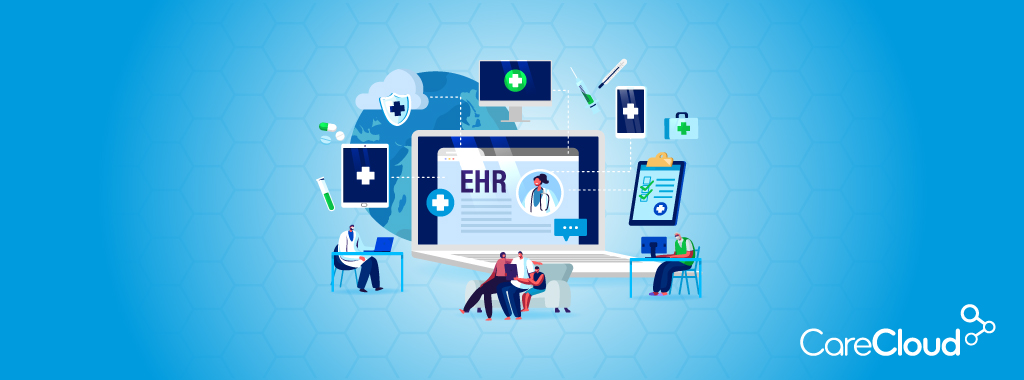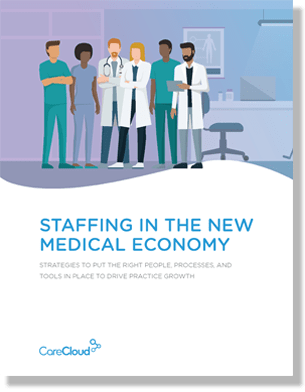EHR, or Electronic Health Record, integration isn’t just a shiny tech upgrade; it’s saying goodbye to scattered records and hello to real-time, reliable information. By connecting systems, apps, and data into one smooth, digital ecosystem, healthcare providers get a complete view of the patient right when and where they need it. As a result, workflows become more efficient, decision-making is improved, and outcomes are enhanced.
Understanding EHR Integration: The Foundation
EHR integration connects electronic health records with other healthcare systems, creating seamless data flow across platforms. This foundational technology eliminates data silos and provides healthcare providers with unified, real-time access to complete patient information. Successful integration improves care coordination while reducing administrative burden and operational inefficiencies.
Types of EHR Integration
1. AI-Powered Integration
Artificial intelligence is transforming EHR integration by enabling real-time data analysis and automation. AI helps generate predictive insights, supports clinical decision-making, and handles routine administrative tasks. With AI-powered integration, healthcare data becomes more actionable and accessible, turning raw information into meaningful intelligence.
2. System-to-System Integration
This type of integration directly links different healthcare systems together. A common example is EHR billing integration, which connects EHR systems with revenue cycle management software, laboratory information systems, and pharmacy management platforms. By ensuring data consistency across all systems, this approach minimizes manual data entry errors that can affect patient safety and disrupt hospital operations.
3. API-Based Connections
Modern EHR systems often rely on Application Programming Interfaces (APIs) to enable instant data exchange between various platforms. API-based integration is flexible and scalable, allowing healthcare providers to connect third-party applications without extensive in-house development. These connections are widely used for patient portals, clinical decision support tools, and other healthcare applications.
4. Cloud-Based Integration
Cloud-based EHR integration offers scalable and cost-effective solutions for healthcare organizations. It reduces the need for heavy IT infrastructure while providing enhanced data security, automatic updates, and reliable disaster recovery. This approach allows hospitals and clinics to focus more on patient care and less on system maintenance.
Current Market Landscape for Electronic Health Records (EHR)
Over 75%* of medical practices now rely on electronic health record (EHR) software, and a significant portion of those use major providers like Epic, Cerner, and Allscripts. While these systems are widely adopted, many practices still struggle with integration issues, outdated interfaces, and limited interoperability; especially when trying to connect with other healthcare systems or third-party tools.
That’s where CareCloud sets itself apart. Designed with modern practices in mind, CareCloud offers a flexible, AI powered platform built for seamless connectivity, intuitive workflows, and real-time data access; without the heavy IT burden or high costs, often associated with legacy EHR vendors.
How EHR Integration Streamlines Clinical Workflows
1. Eliminating Data Silos
EHR integration breaks down information barriers that often separate departments and systems. Without integration, physicians may waste valuable time searching for patient data across multiple platforms, which can delay treatment and increase the risk of errors. A unified EHR system ensures that all patient data is available in one place, improving the speed and accuracy of clinical decisions.
2. Automated Patient Registration and Intake
Integrating EHR systems with patient management platforms automates registration and intake processes. Patients can complete forms online before their appointments, and the information is automatically shared with relevant systems. This approach reduces administrative time by up to 60%* while maintaining data accuracy and improving patient satisfaction.
3. Real-Time Lab Result Integration
Laboratory information system integration with EHR platforms delivers immediate results and improved patient care:
- Instant result delivery: Test results are automatically sent to physicians immediately after laboratory completion.
- Eliminates manual entry: Automated data transfer removes transcription errors and administrative delays.
- Faster diagnosis and treatment: Immediate access to lab results enables quicker clinical decisions and reduces patient anxiety.
- Improved patient outcomes: Streamlined workflow leads to faster treatment initiation and better overall care quality.
4. Enhanced Communication and Coordination
i. Inter-Departmental Data Sharing
EHR integration provides comprehensive patient data access across healthcare departments:
- Instant access to complete records: Healthcare professionals can immediately view full patient histories without delays or barriers.
- Cross-departmental connectivity: Emergency room doctors can access surgical histories while specialists can read primary care notes seamlessly.
- Improved care coordination: Real-time data sharing between departments enhances collaborative patient care and reduces treatment delays.
ii. Provider-to-Provider Communication Improvements
Many EHR systems include built-in secure messaging features that simplify communication between healthcare providers. These messages are automatically recorded in the patient’s chart, maintaining continuity of care, and creating a reliable audit trail for quality improvement initiatives.
5. Automated Administrative Tasks
i. Appointment Scheduling Synchronization
Integrating scheduling platforms with EHR systems enables real-time synchronization of appointments across departments. This reduces scheduling conflicts, minimizes administrative work, and improves overall patient experience.
ii. Insurance Verification Automation
When EHR systems are integrated with insurance verification tools, coverage checks and authorizations are processed automatically. This reduces claim denials, speeds up the revenue cycle, and ensures that any potential issues are flagged before service delivery.
6. Quality Metrics and Outcomes
Healthcare organizations that adopt comprehensive EHR integration consistently report improved performance across key metrics. Patient satisfaction scores often increase by 15–20% due to better coordination and shorter wait times. Hospital readmission rates also decrease significantly, with some organizations seeing reductions of up to 18%* after implementing integrated EHR systems.
Conclusion
EHR integration is a crucial step toward improving healthcare delivery. It enables efficient data sharing, enhances communication, reduces administrative burdens, and supports better clinical outcomes. By investing in integrated EHR strategies, healthcare organizations can achieve greater operational efficiency, higher patient satisfaction, and measurable improvements in care quality.
Frequently Asked Questions (FAQs)
1. What is EHR integration and why is it important for healthcare organizations?
EHR integration connects health record systems with other healthcare applications for seamless data exchange and workflow automation, eliminating fragmented data.
2. What are the main types of EHR integration available to healthcare organizations?
Four main types: system-to-system, API-based connections, cloud-based integration, and AI-enhanced integration for predictive insights and automation.
3. How does EHR integration improve clinical workflows and reduce administrative burden?
Automates patient registration (40%* time reduction), enables real-time lab results, synchronizes scheduling, and eliminates manual data entry errors.
4. What measurable outcomes can healthcare organizations expect from EHR integration?
Patient satisfaction increases 15-20%*, hospital readmissions decrease up to 18%*, and operational efficiency improves through streamlined workflows.
5. What challenges do healthcare organizations face when implementing EHR integration?
Legacy system compatibility issues and complex data migration, despite 75%* of organizations already using some form of EHR system.




